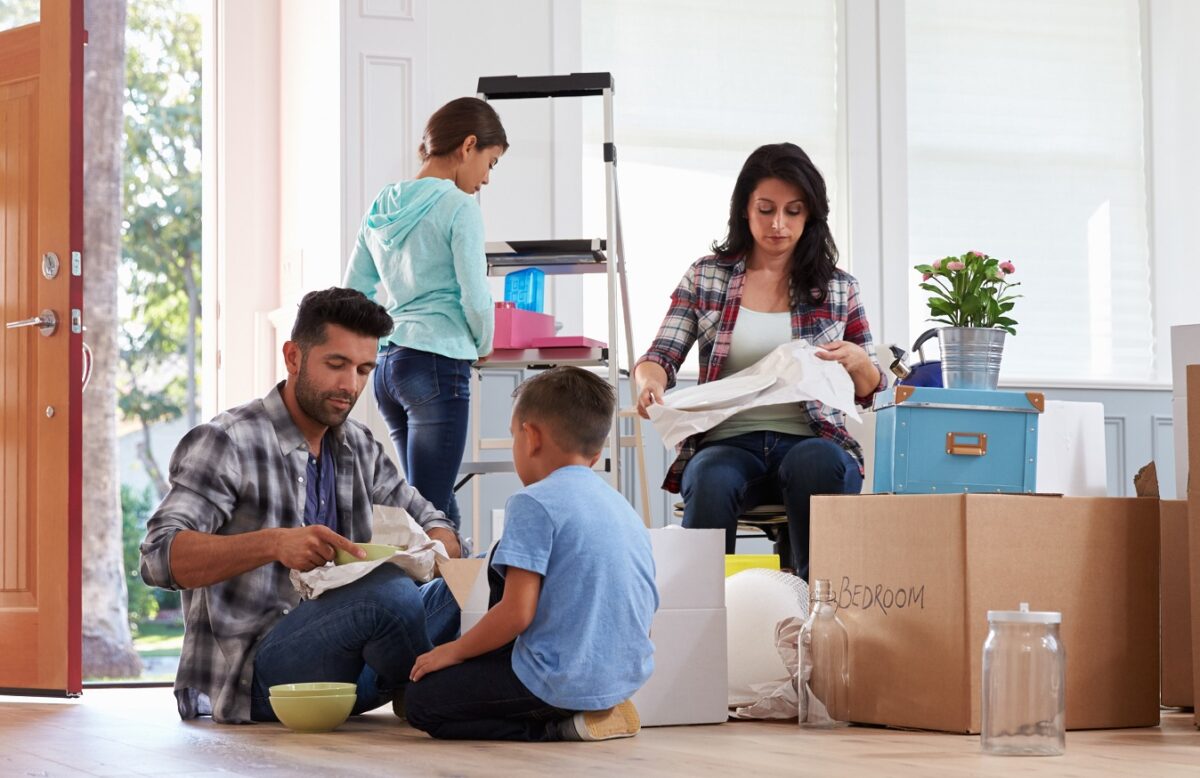So you’ve finally found your perfect NJ home and you’re ready to move. While moving can be stressful, it’s also exciting especially if you enjoy interior decorating. With a new place, you’re starting with a blank slate even if you decided to move furniture from your old place. Even if you don’t enjoy arranging and set up furniture, the helpful guide below can help you get your bearings and set everything up in no time.
Evaluate the Space: Create Room Patterns and Focal Points
A crucial step when planning the arrangement of furniture in your new place is to carefully assess what you’re working with. In order to do so you should:
- Clear the space – remove everything from the room including boxes, scattered furniture, and other objects that will prevent you from seeing the true view of the area. While you might have seen the empty room when you were on the search, it’s all too easy to forget the exact dimensions and things like awkward corners and curved walls.
- Think About the Room’s Purpose – Even if you’re living in a studio apartment, it’s important to understand the function of a specific area. You can easily use your furniture to set up boundaries to create ‘rooms.’ Of course, it’s easier if you live in a place that has more than one room! With that said, the process is the same. Before you start placing your furniture willy-nilly, you should think about the purpose and function of the room. This might be an obvious step, but it’s easy to lose sight especially after a big move.
- Consider traffic patterns and focal points – A focal point is something that draws the eye and helps balance out the space. This could be a piece of furniture or some other kind of decor. For example, a fireplace acts as a natural focal point as do picture windows. If you don’t have a natural focal point, you can create your own by using drapes, artwork, or furniture. Also pay close attention to the location of doors, windows, and awkward areas. You definitely don’t want to block windows or the natural path between rooms.
Strategize with Furniture Layout Tools for Better Arrangements
Now that you’ve had a good look at each room, it’s time to consider different furniture arrangements. Rather than expend a ton of energy moving these bulky items multiple times, you can draft up potential ideas beforehand. This will require measuring the exact dimensions of each room as well as your furniture. Otherwise, you might decide to place a couch in the corner, but realize it won’t actually fit, wasting precious time.
If you took measurements beforehand you can leisurely plan each room’s layout weeks or months before your move. If you didn’t have the time, you can still do so after the move! Don’t skip this step as a good layout can change a room from being calming to stressful. If you need some help visualizing room placement you can:
- Use free online tools – Sites like Floor Planner allows you to place furniture, change the color scheme of the room, and more making it much easier to figure out a good layout.
- Create paper replicas – If you have a difficult space to work with, you might want to experiment in the space with paper replicas of your furniture pieces. You don’t need to get anything fancy, plain brown paper or cardboard should do the trick. You will need measurements of each piece of furniture, which you can trace onto the paper and cut out. Label each paper and then start arranging. If you don’t want to waste all that brown paper, you can create a miniature version of your room and furniture. Just make sure everything is scaled properly!
Formulate a New Balanced Layout
Even if you’re not an expert home decorator, you’ve probably been to a house where something just doesn’t feel ‘right’ about a particular room. Maybe it’s too cramped or everything looks mismatched. Either way, if you follow the tips below you can achieve a practical and balanced layout:
- If you have heavy furniture, balance it out with other large objects or groupings of smaller items.
- Don’t put all the furniture against the wall. It might be tempting as it keeps it out of the way, but that leads to a large empty space in the middle of the room. Instead, place some in the middle area as it will create depth and interest
- Consider the height of furniture pieces and arrange them to create multi-levels in the space. If you have a shorter piece, hang a large print wall to elongate the space. A large print will also encourage the eye to travel up making the room feel taller.
- Don’t be afraid to play with color and patterns. Eye-catching colors can help turn a room from drab to fab. Just make sure you don’t overuse a particular color or pattern especially if they are very bright or loud. Instead, use them as accent pieces through throw pillows, curtains, or art.
- Similar to the above, experiment with a variety of textures to add depth and interest to the room. Pillows, rugs, and drapes are all great ways to add textures. Mixing materials can also add interest. You can use marble, wood, and metal to ground the space while glass and light fabrics can give a room a ‘breezy’ feel.
Don’t Forget to Focus on Better Lighting
Setting up your furniture isn’t just about finding the right place for your tables, chairs, and sofas. Lighting also plays a key role in how to arrange the pieces in the room. So take a moment to actually look at the lighting you have in each room and how you use it to your advantage.
- If you have a big heavy sofa or chest in the room, try to place it under your overhead lights or put a lamp on it to visually lighten them
- Darker rooms tend to feel smaller than brighter rooms. While this might work for cozy living rooms, it might not be great for places like the dining room or kitchen as it can feel cramped. If you can’t change up the lights, consider reducing the amount of furniture in these rooms or investing in some floor lamps to brighten it up.
- If you have end tables or stands, place them in ways that make sense for both the room’s flow and as potential light sources in case you need some more in the room
- Consider using hue lighting as it can be used to set the mood. You can add some wall sconces for extra lighting and it doesn’t take up any real estate on a table or floor
Hire Professional NJ Movers
Setting up your new home can be an exciting and painstaking process. Even after you arrange your rooms when you move, you may end up going through multiple layouts throughout the years as your needs and moods change. Your tastes may also change so you’ll end up rearranging your house multiple times! These tips can help you layout your home whether you decide to change up your furniture or move to a new place.



